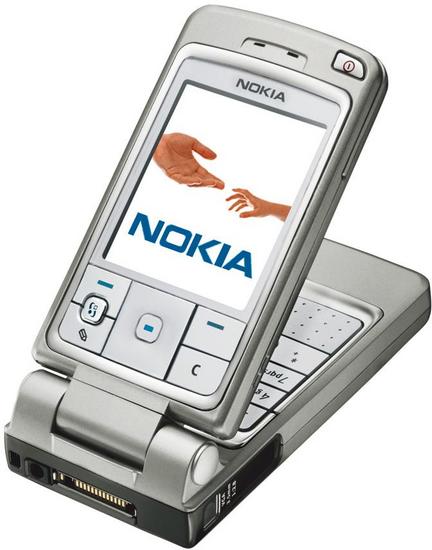 Windows Mobile is fairly simple as far as the internal classification of OSes goes; ignoring the division between the touchscreen and non-touchscreen variants, you don’t tend to have subdivisions. The one exception I can think of is the difference between Pocket PC 2003 and 2003 Second Edition, the chief discriminator being the ability to rotate the screen to landscape within the OS. S60 divides itself into a number of “feature packs”, S60 2nd Edition being divided into the original and FPs 1, 2 and 3. A cursory glance tells me that these changes to S60 track either changes to S60 itself (as in the difference between the original and FP1, both of which are based on Symbian 7.0s), or changes to the core OS (as in the change from FP1 to FP2 where Symbian went from 7.0s to 8.0a).
Windows Mobile is fairly simple as far as the internal classification of OSes goes; ignoring the division between the touchscreen and non-touchscreen variants, you don’t tend to have subdivisions. The one exception I can think of is the difference between Pocket PC 2003 and 2003 Second Edition, the chief discriminator being the ability to rotate the screen to landscape within the OS. S60 divides itself into a number of “feature packs”, S60 2nd Edition being divided into the original and FPs 1, 2 and 3. A cursory glance tells me that these changes to S60 track either changes to S60 itself (as in the difference between the original and FP1, both of which are based on Symbian 7.0s), or changes to the core OS (as in the change from FP1 to FP2 where Symbian went from 7.0s to 8.0a).What this means in practice is not entirely clear to me, but going through the software available out there, installation seems to depend principally on the edition of the OS, and less so on feature packs, as one might expect. There also appears to be a fairly big jump between S60 1st and 2nd Editions and the 3rd Edition, in that software seems to be compatible between the 1st and 2nd, but needs to be rewritten for the 3rd. It also appears that unlike Windows Mobile, third party products have to have some kind of digital signature. While this pretty much guarantees some quality, this tactic also locks tinkerers out of the ecosystem, which is reflected in the relative paucity of third party apps, especially freeware, out there for S60 compared with Windows Mobile and Palm.
 Given that preamble, the decision ended up being between two models of phone: the Nokia 6600 (Symbian OS 7.0s, S60 2nd Edition) and the Nokia 6260 (Symbian OS 7.0s, S60 2nd Edition Feature Pack 1). Intriguingly, neither of these phones have stereo output for mp3 playback, although the radio in the Nokia 6260 may well be. The screens for these phones is also pretty small, only 176 x 208, which is even smaller than my MPx200’s 176 x 220. The main advantage of the 6600 is that it takes full size MMC cards while the 6260 only takes RS-MMC, but the 6260 has a faster processor (123MHz vs. 104MHz) and more RAM (11MB vs. 9MB). I’ve heard that S60 has a much reduced requirement when compared with Windows Mobile, but these values are bordering on ridiculous, and I am not sure whether the 19MHz and 2MB improvements will make any difference whatsoever.
Given that preamble, the decision ended up being between two models of phone: the Nokia 6600 (Symbian OS 7.0s, S60 2nd Edition) and the Nokia 6260 (Symbian OS 7.0s, S60 2nd Edition Feature Pack 1). Intriguingly, neither of these phones have stereo output for mp3 playback, although the radio in the Nokia 6260 may well be. The screens for these phones is also pretty small, only 176 x 208, which is even smaller than my MPx200’s 176 x 220. The main advantage of the 6600 is that it takes full size MMC cards while the 6260 only takes RS-MMC, but the 6260 has a faster processor (123MHz vs. 104MHz) and more RAM (11MB vs. 9MB). I’ve heard that S60 has a much reduced requirement when compared with Windows Mobile, but these values are bordering on ridiculous, and I am not sure whether the 19MHz and 2MB improvements will make any difference whatsoever.So, the decision then comes down to price, and once again, it is interesting to see that the older 6600 fetches nearly the same price as the 6260. I guess the 6600 must have been very popular, because there is a shed load of them on eBay, and they go for just under £40 now. In contrast, the 6260 is a rarer model, and sells for just over £40. It suggests to me that the 6600 is still in much demand. Indeed, accessories for the 6600 abound still, including all manner of fascias and cases. Reviews have also been fairly positive (this is going back some 4 years now) of the 6600, and less so of the 6260.
In the end though, I think I prefer the flip and fold form-factor of the 6260, so it may well be my choice.



No comments:
Post a Comment